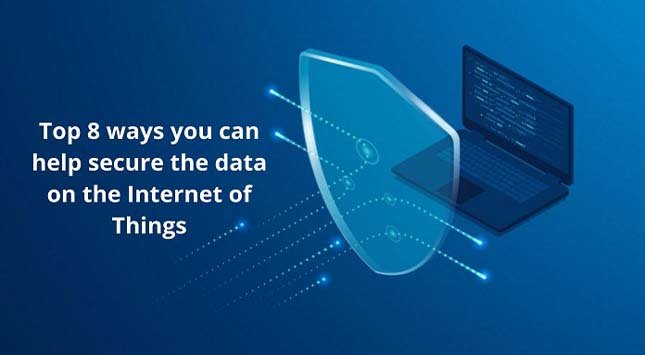Internet of Things has been rising at a fast rate over the last few years. While technology is not a new trend, it has unique current popularity.
To describe it, the Internet of Things simply refers to Internet-connected devices or objects. Some examples are Smartwatches, Refrigerators, Fitbit, etc.
The internet of things offers, without any doubt, plenty of interesting possibilities and concepts for creativity. Having said that, the scope of privacy and security threats associated with this technology is something many people do not know.
For that matter, any system that shares a wireless connection faces the possibility of some kind of security rupture. When an unapproved individual gains access to your computer, they can control the system’s functionality or even access your customs data.
We will explore the top ways in which you can protect your IoT devices
How to Secure Your Data on IoT Devices
#1 Assume the Advantages of Combining to the Internet
Only because it has the functionality, don’t connect your smart device to the internet. First, you can test what features your device has to offer without connecting it to the internet.
You may find that your smart device has good features that are available without access to the internet. It is tended to use the system offline in that situation. It is a good way to protect your smart device’s health, without spending anything.
You may like to Read: Web Content Filtering Software for Schools
#2 Use Secondary Network
Your WIFI router is most of the time able to create several networks that will help you create limited connectivity for your family and friends. You should also consider building an additional network of devices just for your internet of things.
It will help you control unauthorized access to your confidential data as you use your smart devices to access your link. Using a separate link to serve as a buffer will help ensure no outside party can access your shared files and other forms of encrypted data.
#3 Keep Growing your Passwords
It’s critical on your device, user accounts, and mobile devices that you keep changing your passwords. You need to know this. But you should also note is that changing the passwords that you use on your networks on the internet of things is equally critical.
For those passwords, you should be vigilant to ensure that each computer has a unique password. To remember your passwords, you can use a password manager, or just use the traditional pen and paper form. Remember every password has to be updated twice a year.
#4 Don’t Allow Universal Plug & Play Comments
Almost all smart devices development have one feature, called UPnP, which allows different devices to find each other and to connect. These features make the devices more comfortable because each of these devices need not be configured separately.
However, what you need to be aware of is that UPnP protocols use local networks to connect, and are therefore vulnerable to external access.
Outside entities may be able to gain access to multiple devices simultaneously in case of an attack. Hence, turning off the UPnP feature on every device is a good practice.
#5 Modernize Your Every Device
If available, you should allow automatic updates, and search periodically for firmware updates in its absence. It is important because this is the way you install new security patches on your devices.
As hackers and other intruders continually come up with new ways of hacking IoT apps, hardware manufacturers are engaged in the constant effort to battle these threats with security standards. Assuring that all of your apps are modified would, therefore, help to improve security in your entire home.
#6 Diminish your use of Cloud Technology
As you may be aware, most IoT providers provide their users with free cloud storage. This is because it is considered as new technology. Although, this technology does have some possible disadvantages.
Firstly, if you want to access the data you store in the cloud, you need an active link; the information cannot be accessed without a link. Second, when you are accessing your account, outsiders can be able to break into your link.
So make sure you’re familiar with the ways to protect your data and completely understand the privacy protection before you start using the cloud.
#7 Be Cautious of where you take your Wearable
Wearable apps use the WIFI entrance to obtain and store personal data, so they can present reliable information to you later. Therefore, when you carry your wearable device to a public location because it connects to the public WIFI, the data is automatically accessible to everyone connected to the same network.
So, avoiding to take your wearable that has a distributed network is a safe bet. Make sure you disable the device when you don’t use it if you do take it.
# 8 Avoid doing Risky Devices
Some IoT devices need to be permanently combined with the internet for effective operation. Even, some don’t add as much value to your life as you anticipated.
Therefore, it is a good idea to discover from time to time the effectiveness of your apps. If you feel they don’t add anything to your life, or if they appear to be risky, better discard it.
If there is one single computer device of replacing many others, invest in that computer. That is because the fewer apps you use the less is the risk factor.
Conclusion:
There are several advantages to using devices that depend on IoT. It can make our lives easier and gives us access to data that would otherwise not be available.
Unlike other systems IoT does, however, have its share of threats. You need to be careful of these threats, and take steps to protect yourself from them.

